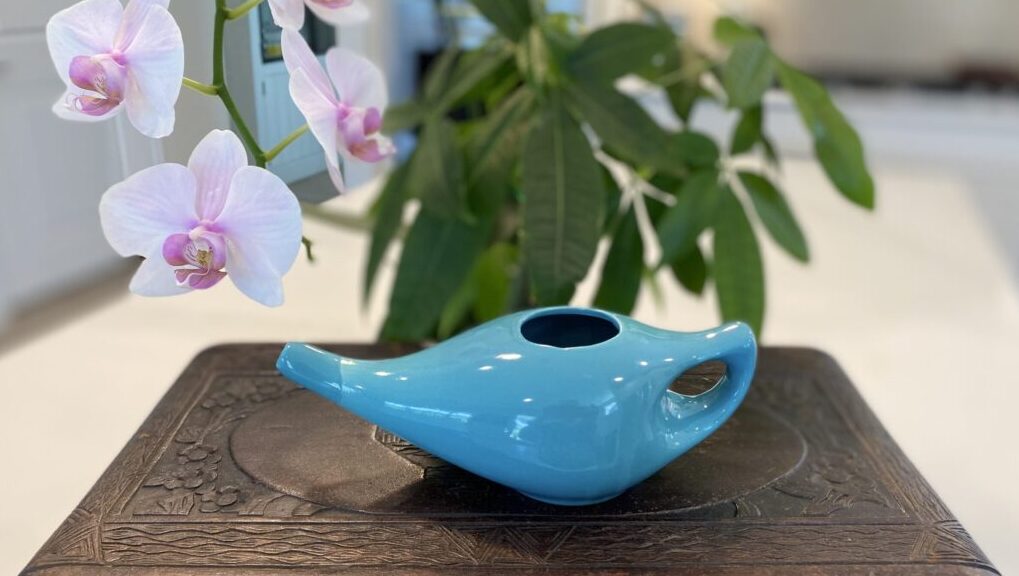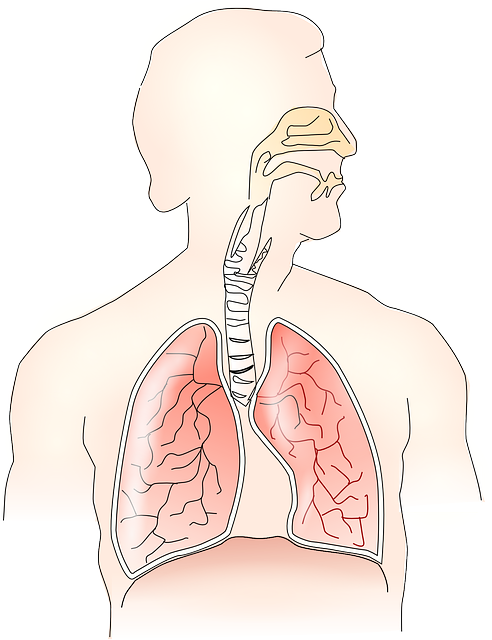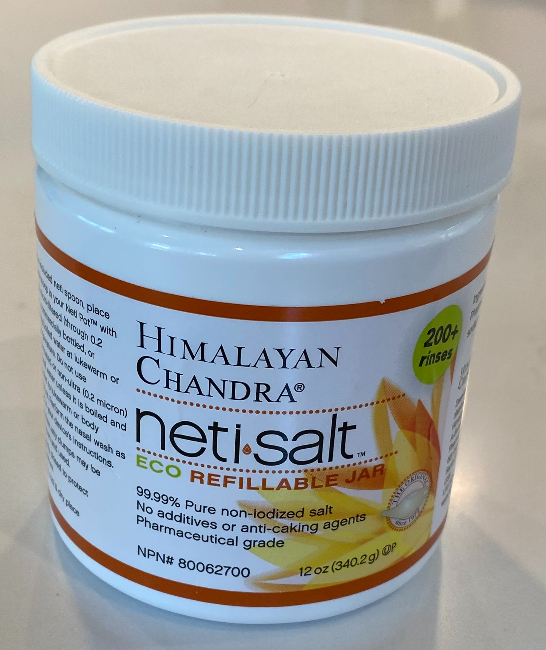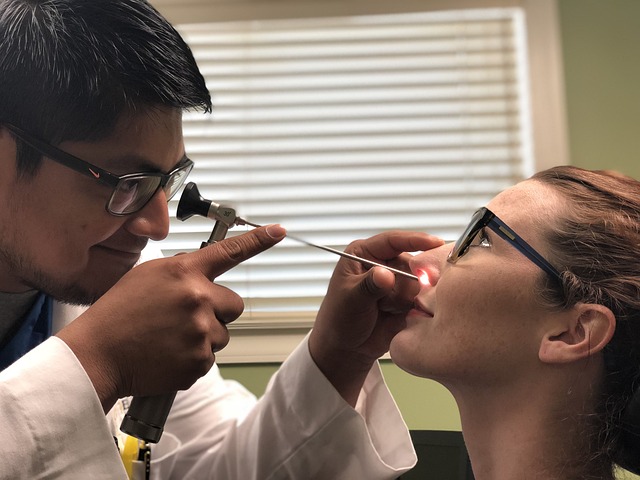Just rub the sides of this container and a genie will emerge in a vapor, ready to grant me three wishes. Oh, boy!
All I really want right now is to 1) breathe better, 2) avoid the stage of this sinus infection where I wish there were microscopic sticks of dynamite I could use to break up the congestion and pressure behind my forehead, nose, and eyes, and 3) get along with life.
My daughter, long the naturopath in her approach to maintaining health, led the parade on this one, and my son was next – much to my surprise – because of his selectively squeamish nature. Now, I have finally joined the band wagon.
Doing what?
Using a neti pot to rinse my nasal passages.
I mean, pouring salt water into one nostril, in anticipation of it draining out the other, just goes against my instincts to avoid drowning, you know?
Let’s start from the beginning. Quoting Alfred Iloreta, MD, Assistant Professor of Otolaryngology-Head and Neck Surgery at Mount Saini Hospital.
“The practice of irrigating the nasal passages with water has been around for approximately 5,000 years with its origins South Asian culture, within the practice of Ayurveda, an ancient practice of yoga. These Yoga Masters called the sinus cleansing technique, “Jala Neti,” and it exists as one of the six main practices in cleansing the body to prepare for the higher practices of yoga.”
While the idea of nasal rinsing was first introduced to Western medicine in the early 1900’s, mass marketing of devices did not happen until the early 1970’s.
An uptick in the interest of using neti pots started in the 1990’s, when there was an increased awareness that overusing antibiotics resulted in antibiotic resistance, and people became more proactive in seeking alternative therapies for sinus issues.
I sure didn’t want to start a round of gut-microbiome-stripping antibiotics if I could help it, so with my daughter’s tutelage, I leaned over the sink, tilted my head just so, and experienced the wonders of neti pot nasal cleansing.
There are a few things to keep in mind:
Always use either distilled water or water that has previously been boiled for a few minutes. Why not use tap water? Tap – and even filtered water – can harbor traces of bacteria and microbes that, while safe to drink thanks to the action of the acidic environment of our stomachs, are not killed when poured into our nasal passages.
There have been rare cases of wicked infections being caused by using unboiled tap water. Yikes!
Thoroughly clean the neti pot after each use, and especially sanitize if sharing one – or even better, get them one for their own use.
Use water warm enough to dissolve the salt, but make sure it has cooled enough after mixing to be comfortable inside your nose.
You can read more about these sensible precautions at Medical News Today.
This was so easy for me to use. The learning curve is quite low, and I can happily report that I am recovering from my sinus condition without having had to use antibiotics!
Twice-a-day use was sufficient during the acute phase. Many people recommend continuing with regular weekly use. I’m not sure if I will be doing that or not; but certainly, my darling neti pot will be put to good use – especially in allergy season.
In health, breathing free and clear –
Deidre









